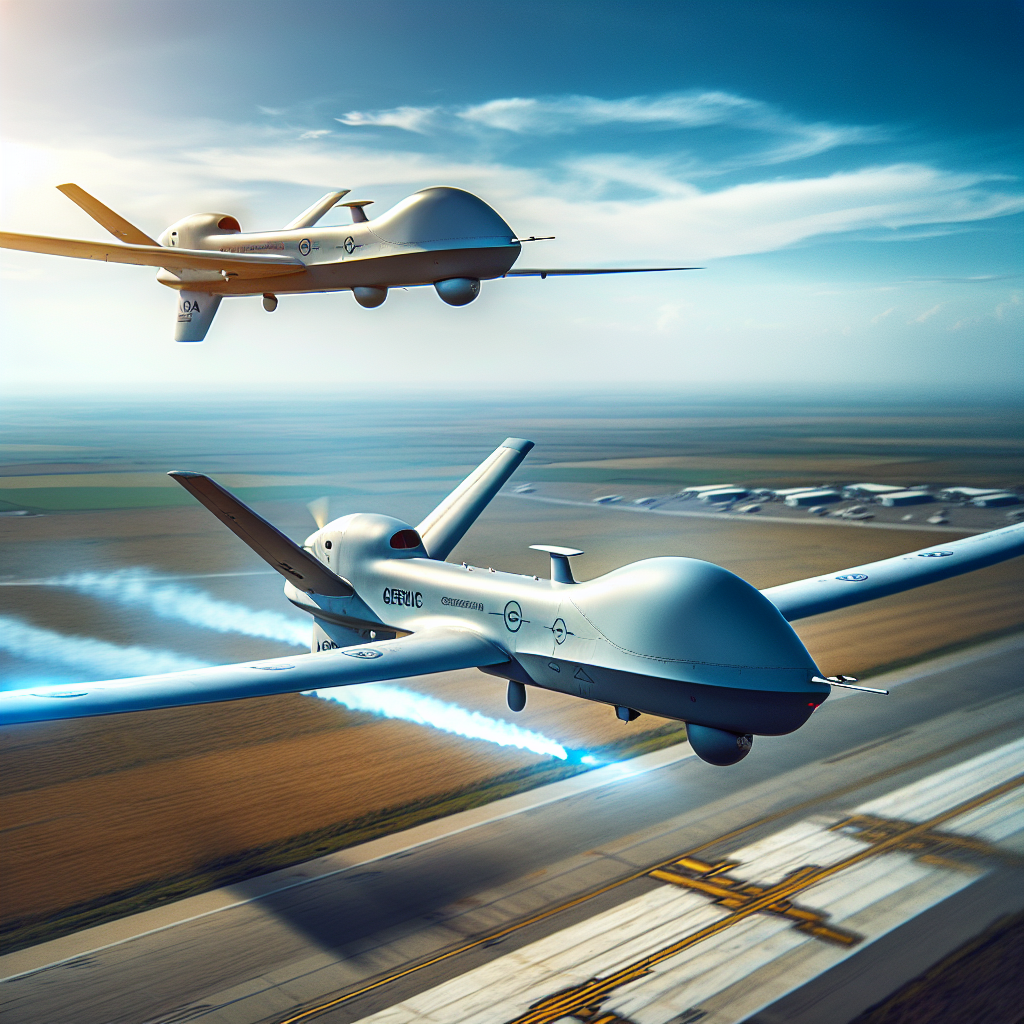The US Air Force announced last week that the unmanned combat aircraft YFQ-42A and YFQ-44A developed by US defense companies General Atomic Aeronautical Systems and Anduril Industries have begun testing. These prototypes are the first unmanned aircraft to be designated as combat aircraft in US military history. General David Alvin, Chief of Staff of the US Air Force, stated that this test is a significant milestone for the Cooperative Combat Aircraft (CCA) program.
Anduril focuses on AI-driven autonomous systems, while General Atomics is known for the MQ-9 “Reaper” unmanned aircraft, capable of executing multiple intelligence, surveillance, and reconnaissance missions.
General Atomics’ YFQ-42A is developed based on the XQ-67A prototype, featuring a stealth design, a similar layout to the XQ-58A Valkyrie, with top inlet, V-tail, and made its maiden flight on February 28, 2024. The XQ-67A adopts a common drone platform, similar to a car’s chassis, including basic configurations like the fuselage, landing gear, and basic aviation electronics, constituting 70% of the drone’s cost. The advantage of using a common platform is to increase production capacity, reduce costs, and accelerate the development of various drone designs.
The other officially designated YFQ-44A is Anduril Industries’ Fury drone, acquired when Anduril purchased the Blue Force Technologies in 2023. The Fury drone, approximately half the size of an F-16 fighter jet, is highly modular designed to accommodate various payloads. Fury will utilize Anduril’s “Lattice” intelligent operating system to provide autonomous functions and can collaborate with manned aircraft during operations.
According to the US Air Force, the program aims to develop the next generation of unmanned combat aircraft that can cooperate with manned fighter jets, reflecting a strategic shift towards autonomous air combat.
The concept of Cooperative Combat Aircraft (CCA) stems from various early unmanned aerial vehicle programs of the US Air Force. The previously developed Skyborg program by the Air Force Research Lab can be integrated into the CCA airframe. Initially referred to as “loyal wingman,” CCA acts as a loyal companion to manned aircraft but is not disposable on the battlefield. It possesses combat and survival capabilities akin to manned fighter jets, with significantly lower procurement and operational costs. However, the estimated cost for each CCA is expected to exceed tens of millions of US dollars.
The Pentagon has allocated $8.9 billion specifically for CCA development, which is part of a broader budget of $284.8 billion from 2025 to 2029 for the Next Generation Air Dominance (NGAD) system.
While China has not announced a development plan for the next generation “loyal wingman,” they have tested drones like the FH-97A and GJ-11. The FH-97A debuted at the 2022 Zhuhai Airshow, bearing a striking resemblance to the MQ-28 Ghost Bat developed by Boeing for Australia, resembling twin brothers. The GJ-11, which made its debut in 2019, bears a strong resemblance to the US Navy’s canceled X-47B demonstrator.

